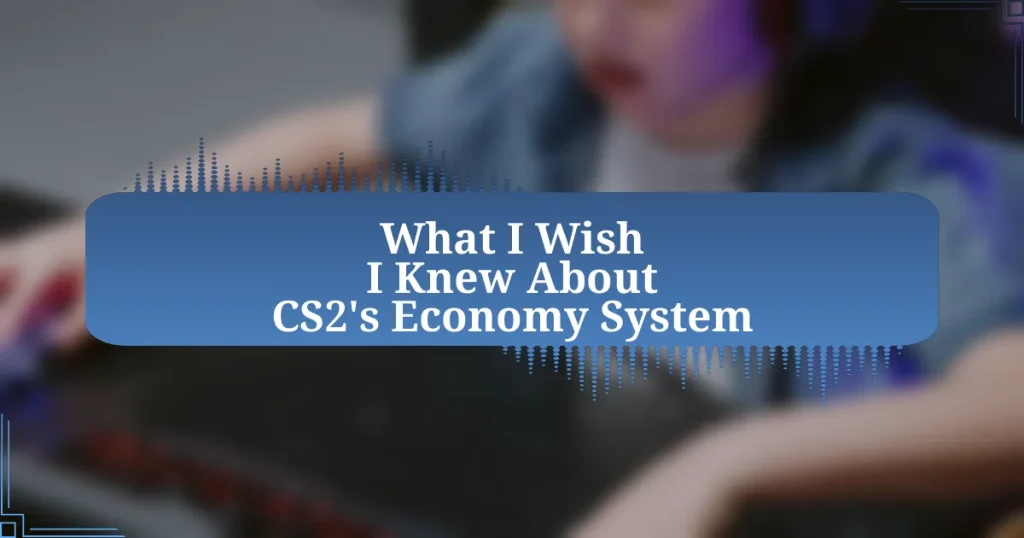Key takeaways:
- Understanding the economy in CS2 requires strategic thinking, balancing risk and reward, and effective communication within the team.
- Key concepts like eco rounds can significantly impact overall performance, allowing teams to prepare for stronger buys in future rounds.
- Individual purchasing decisions greatly affect the team and should align with the collective economic strategy for better outcomes.
- Common mistakes include impulsive buying, failing to assess team and opponent economies, and neglecting loss bonuses, which can have dire consequences for gameplay.

Introduction to CS2 Economy System
The economy system in Counter Strike 2 (CS2) is a fundamental element that significantly impacts gameplay and strategy. I still remember my first few matches, feeling the tension as my team’s financial decisions dictated whether we could buy the equipment needed to turn the tide of battle. It’s fascinating how that very notion – of balancing risk and reward – can feel like a high-stakes game of chess.
Understanding the economy means you’re not just a player; you’re a strategist. Have you ever found yourself debating whether to save your money for a future round or spend it all in a desperate attempt to secure an immediate win? I often faced that dilemma, and it truly changed my approach to the game. The underlying mechanics—knowing when to be frugal and when to splurge—can either set you up for success or lead to your downfall.
CS2’s economy system is intricately tied to team dynamics, requiring players to communicate effectively and make collective decisions. I’ve seen matches where one player’s rash purchase left the team vulnerable for several rounds. It raises the question: how well do you know your teammates’ playstyles and financial strategies? This intricate web of choices adds a thrilling layer to the game, transforming each round into a microcosm of larger tactical considerations.
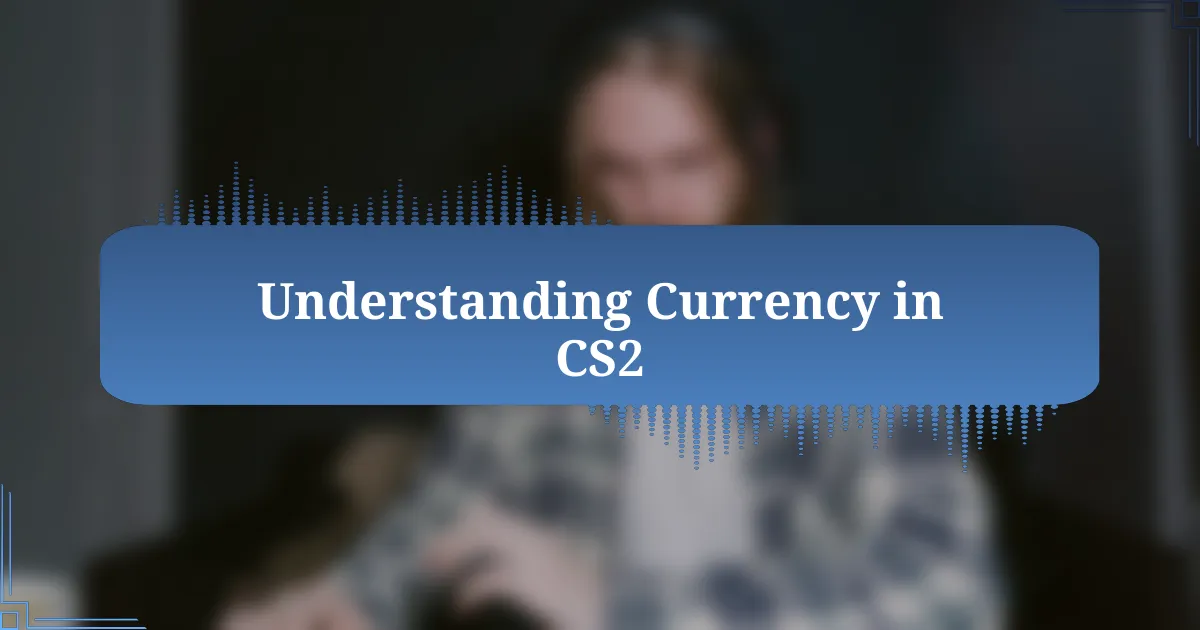
Understanding Currency in CS2
Understanding the currency in CS2 is essential for navigating its economy system effectively. When I first started playing, I underestimated how vital saving and spending could affect my team’s overall performance. It’s not just about the number of kills you get; it’s about knowing when to invest in better weapons versus when to hold back and save for crucial rounds.
I recall one match where I decided to buy an AWP early on, thinking my sharpshooting skills could turn the tide. Instead, my misjudgment left my team without enough funds for the next round, and we paid the price. It taught me a valuable lesson in foresight—sometimes, holding onto currency until it’s strategically beneficial can make all the difference in a tight game.
Do you often find yourself uncertain about when to make purchases? This uncertainty is something I grappled with frequently. Understanding the currency isn’t just about making a single decision; it’s a continuous evaluation of your team’s needs and the evolving situation on the battlefield. The emotional rollercoaster of these decisions often leads to profound moments of growth, both as a player and as a teammate.
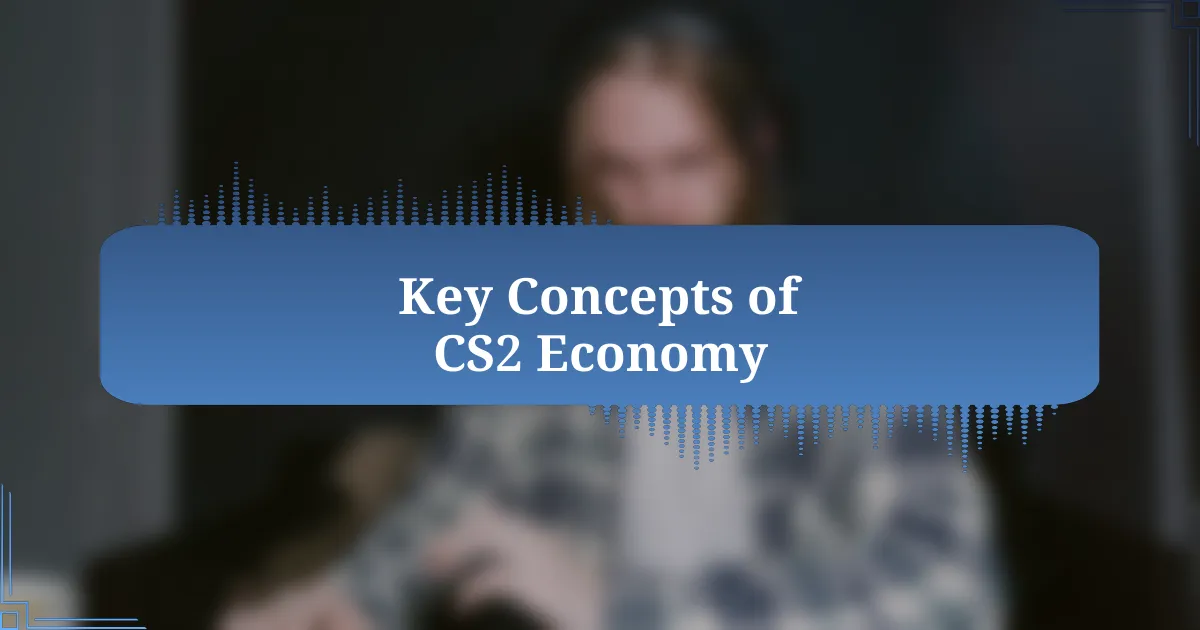
Key Concepts of CS2 Economy
In CS2, every player’s decision impacts the team’s economy, often leading to significant consequences. I remember a round where our captain insisted on saving, despite my eagerness to buy rifles. Initially frustrated, I soon realized that this patience set us up for a winning streak, highlighting how collective financial decisions can shift the game’s momentum.
One concept that’s crucial to grasp is the importance of eco rounds. Initially, I thought these rounds were merely a formality. However, after experiencing a game where my team executed a perfect eco strategy, I understood their power. We were able to accumulate enough funds for a decisive buy in the following round, effectively turning the tide and securing a victory.
Have you ever felt the thrill of a well-timed buy? The adrenaline rush when everyone on your team synchronizes their resources can be exhilarating. It’s moments like these that solidify the bond between teammates, demonstrating how shared economic strategies foster teamwork and trust, which are essential components of success in CS2.

Importance of Team Economy
Team economy in CS2 is not just about numbers; it’s about synergy and strategy. I recall a match where we collectively decided to stick to a strict budget, opting for only pistols while our opponents flaunted their rifles. At first, it felt like we were setting ourselves up for failure, but that decision allowed us to come back stronger in the next round, demonstrating how a team’s financial discipline can lead to unexpected victories.
Have you ever faced a situation where a poorly timed purchase put your team at a disadvantage? I remember a tense moment when I rushed to buy an AWP, convinced it would turn our performance around. Unfortunately, my teammates couldn’t fully afford their gear, leading to our downfall that round. This experience taught me that individual decisions directly affect the entire team, reminding me just how vital it is to maintain a cohesive economic strategy.
Balancing personal ambition with team needs isn’t always easy, but it’s essential for success in CS2. I find that when we prioritize the team economy, the commitment and trust among players grow. Reflecting on those experiences makes it clear: in the heat of battle, a well-managed economy can be the cornerstone of not just victory, but also a stronger, more connected team.
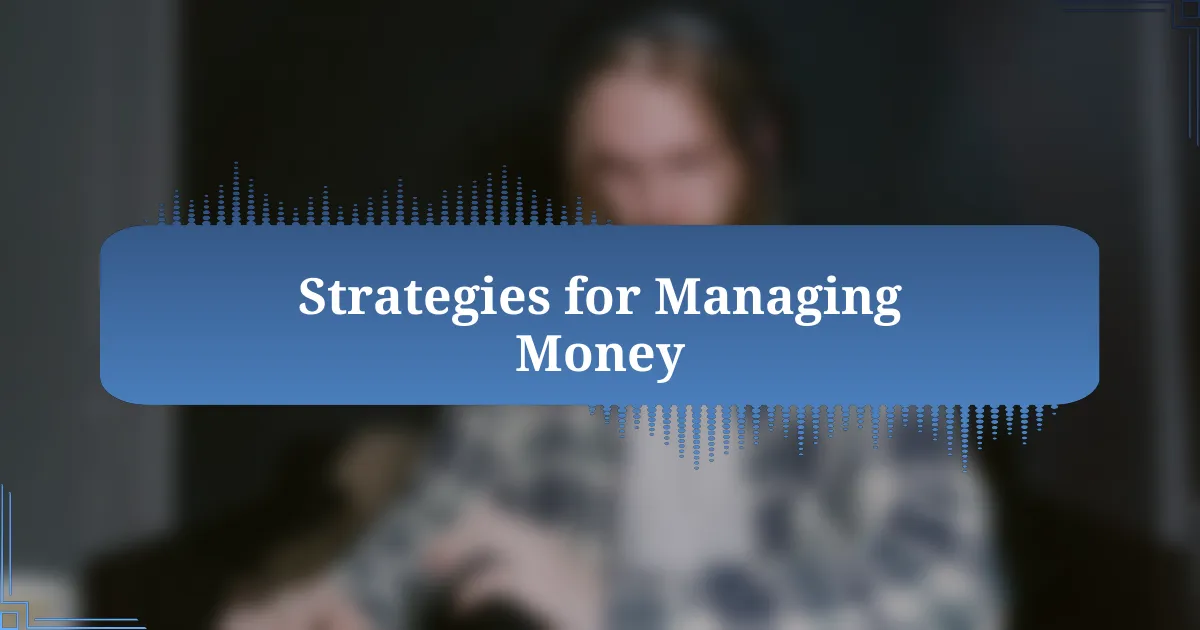
Strategies for Managing Money
Managing your money in CS2 can be quite the balancing act, but I’ve found a few strategies that work wonders. For instance, I remember during one intense match, our team decided to implement a “save round” strategy. Instead of buying weapons, we opted to invest in utility instead—smokes and flashes. This saved us enough for a strong buy on the next round, allowing us to dominate when it mattered most.
Another key strategy is to avoid impulse purchases, especially when the pressure’s on. There was a time when I felt the urge to buy an expensive weapon despite knowing my team was short on funds. The result? A frustrating round that left us vulnerable. It reminded me that self-control is paramount. Asking myself, “Is this purchase aligning with our overall strategy?” became a crucial question.
Lastly, communication plays a vital role in shaping our economy. I’ve experienced moments where simply discussing our financial state, like how much each player can afford, creates a shared understanding. This way, everyone’s on the same page, and it minimizes the risk of anyone feeling left out or overextending. When was the last time your team sat down to discuss the economy before a match? Trust me, it makes a world of difference.
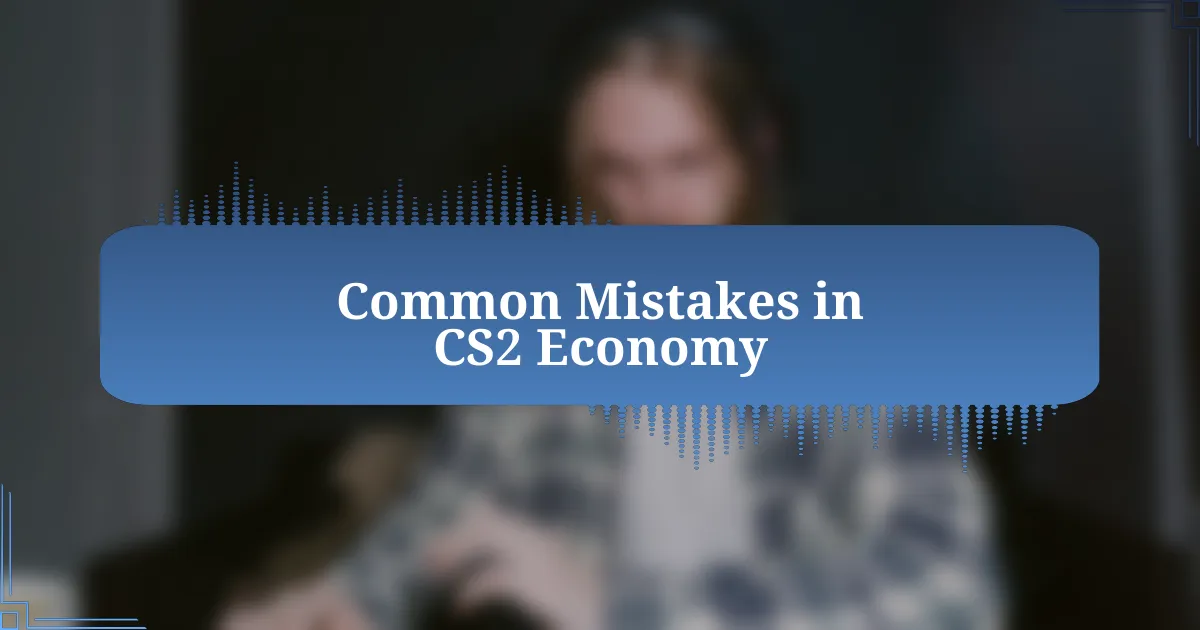
Common Mistakes in CS2 Economy
It’s all too common for players to overlook the importance of properly assessing the team’s economy before making purchases. I remember one game where we were on the brink of losing, yet a teammate insisted on buying an AWP, thinking it would turn the tide. Unfortunately, it left us broke and unable to buy essential utility for the next round. Have you ever found yourself in a similar situation, thinking a big buy could swing a match, but it only idealized your hopes into despair?
Another frequent mistake is failing to adjust your purchase strategy based on the map and opponent’s economy. I once played on Inferno where our enemies had little cash left, yet our team still bought rifles instead of taking advantage of their weakness through a force buy. This oversight not only wasted potential but ultimately allowed them to recover and gain momentum. How often have you seen a missed opportunity change the course of a game when just a little strategic thinking could make a world of difference?
Lastly, I’ve learned that neglecting to factor in loss bonuses can lead to a misleading assessment of your team’s readiness. There was an instance when we assumed we were out of the game after a couple of losses, but when I analyzed the loss bonus, I realized we were closer to being able to afford a full buy than we thought. It was a bitter lesson: always keep the bigger picture in mind. Do you track your loss bonuses, or do you find yourself making decisions based on how things feel in the moment? Trust me, making the connection between loss bonuses and your investment decisions can be a game-changer.











